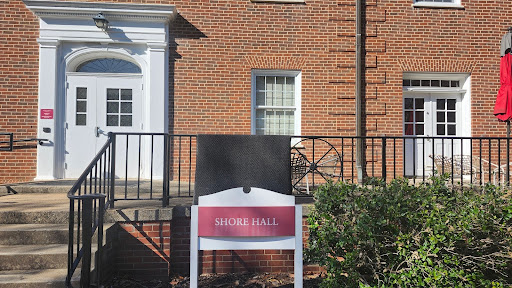In less than a month, the president’s office will seek the board of trustees’ approval for a three-percent tuition hike.
Administration will also ask for a go-ahead on another $250,000 in budget cuts, including staff and faculty position cuts, should Guilford College reach an enrollment “worse-case scenario.” The cuts come on the heels of $2.5 million to an over-$60-million budget over the past two fiscal years.
With help from 990 tax forms the College provides to the IRS and data provided by The Chronicle of Higher Education, The Guilfordian examines where professors’ salaries lay amid the College’s finances.
For over 10 years, Guilford professors’ salaries have remained well under those at the College’s peer and aspirant institutions despite increased workloads and continuing excellence in educating and advising students.
Comparative data provided by Kent Grumbles, director of institutional research & assessment, shows that Guilford’s professors’ salaries are lower than its 14 peer institutions’.
In 2002, a full professor averaged $55,357, associate professor $46,084 and assistant professor $38,825 — while those at peer institutions earned $61,284, $50,182 and $42,296.
Ten years later, a full professor at Guilford earns, on average, $71,000 while an associate and assistant make $57,100 and $50,200 respectively, whereas the averages at peer institutions are $82,579, $66,621 and $57,379 respectively.
Although faculty have received promotions, they have not received raises commensurate with the added responsibility.
“The average salaries by rank have changed a little because some faculty have been promoted to a higher rank, while keeping the current salary at their lower rank, and also because of retirements or departures,” Grumbles said.
President and Professor of Political Science Kent Chabotar said providing faculty with raises shows the institution values its employees. This is why he insisted faculty receive raises beginning in 2014–15, even if enrollment only reaches “worst-case,” the college’s top administrators said.
Ben Marlin, assistant professor and chair of mathematics, finds the rate of professor pay troubling, especially for bringing the best educators to Guilford.
“If we can’t offer a competitive salary, and an applicant has two offers, only those who are somehow determined to come to Guilford regardless will choose our lower offer,” said Marlin. “That means it’s likely that we’ll only be able to afford to hire those who aren’t getting offers from other schools.”
Meanwhile, top Guilford administrators received notable salary increases over the same 10-year period.
In 2002, the president made $138,549, vice president of advancement $156,289, vice president for finance $109,109, dean of CCE $71,500, vice president & academic dean $64,422, dean of student affairs $65,005 and vice president of enrollment $80,667.
Nine years later, the president now makes $269,850, vice president of advancement $215,244, vice president for finance $165,960, dean of CCE $97,000, vice president & academic dean $149,820 and vice president of admissions $128,000.
Administrators at the college also receive what is called deferred compensation, which they receive as pay later on. In some cases administrators make an extra $10,000 a year, in other cases over $40,000.
Public institutions must provide a full accounting of their administrative salaries, unlike private institutions such as Guilford. Except for the highest-paid administrators, other administrative salaries remain confidential.
Faculty who have been with the College for 20 years or more have remained the lowest paid among their peers while senior administrators have hovered towards the middle of the peer list, except for the vice president for advancement, who is ranked number one among the peers.
Associate Professor of Sociology Julie Winterich, who came to the College in 2008, said Guilford could be a leader in creating a just salary policy for all employees regardless of rank, especially considering the equality prong of the College’s core values and mission.
“The question for any institution of higher learning to consider is: how are resources distributed in light of the core mission of education?” said Winterich. “Regarding faculty salaries, why do our peers, who have similar budgets, revenues, expenses and endowments pay their faculty better than does Guilford?”












Victor Lopez • May 3, 2014 at 7:07 pm
I would like to believe that this is not an administrator jabbing at those who are the very backbone of this college. This is not a research institution. Our professors are overworked and give of themselves in the way that a liberal arts institution should.
You, my dear, are a coward. Go home. Your hyperbole is not appreciated.
Michael Selzer • Feb 20, 2014 at 10:40 am
The question really shouldn’t be how much faculty are paid but what they do in exchange for their salaries and benefits (I note that faculty benefits are not mentioned in this article: they should have been.)
How many hours do faculty spend teaching – whether in class or in conferences with their students? How productive are they in their research? How many scholarly – peer-reviewed – publications do they produce? And, more important, how frequently are those publications cited by other professors in their peer-reviewed publications?
Relate the answers to these questions to faculty salary and you may well find that your professors are among the most overpaid and underworked people in America today!